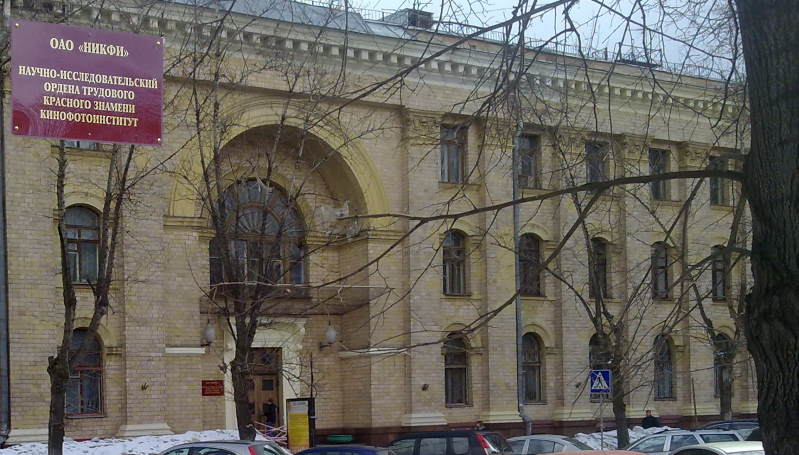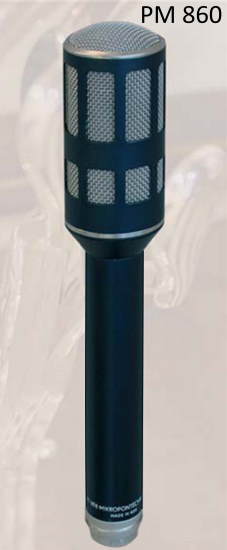From Moscow with love - The Microtech Gefell M 900
A stylish handheld microphone with a remarkable history

The cardioid condenser mic M 900 (and its hypercardioid cousin M 910) is not only striking in appearance, it also has remarkable historical roots.
Microphone technology from the limited partnership Georg Neumann & Co. was already in great demand in Eastern Europe in the 1950s and 1960s. This did not change after the expropriation in 1972. Renamed VEB Mikrofontechnik Gefell and under the new brand name "RFT", enormous quantities of Gefell products continued to be sold in Eastern Europe. Thousands of mics were were mostly exported to the Eastern European countries that belonged to the Council for Mutual Economic Assistance (CMEA) and primarily to the former Soviet Union. Gefell mics, usually known in Russian as „Neumann-Gefell“ mics, were used in all areas of cultural life.
The huge increase in demand from the Soviet market in the 80s led to an increased interest in cooperation, especially in the development of new microphone capsules. This led to the development of a new condenser mic, the PM 860, the predecessor of the M 900/M 910.
The PM 860 was developed in cooperation between the russian NIKFI (Research Film and Photography Institute) and the RFZ (Rundfunk und fernsehtechnisches Zentralamt - institution for broadcast and television) in Berlin and was put into production in large numbers in 1986.

The NIKFI, established in 1929 is an international wellknown R&D center, including acoustics. In 1991, for example, NIKFI was awarded prestigious "Technical Achievements Award" by US Motion Pictures Academy (Oscar’s). The Institute`s excellent acoustics laboratory became the cooperation partner in the 80s. The main activities, then and now, among others, include the development and production of studio mics. In partnership with specialists of the NIKFI-acoustics laboratory, a new 24 mm ceramic capsule was developed and used in the PM 860, in Russian also called the "German grenade" because of its special design, was a great success not only on the Soviet market. Due to its qualities, it survived the collapse of the EAST markets caused by the currency union in 1990. Thus, a PM 860 special edition in the 1990s, as a vintage edition, found a large number of enthusiasts in the Western hemisphere as well.

The technical characteristics of the special edition corresponded to both the historical microphone and the current standards for studio quality. The outstanding features of the Vintage Edition were, among others, a balanced frequency response in the free and diffuse field as well as the distinctive cardioid characteristic. This enabled a true-to-life recording of any sound source with good selectivity. At the same time, the influence of interference sources (e.g. inherent noise, wind and structure-borne sound) was reduced to a minimum. The axial direction of maximum sensitivity favoured its use as a soloist microphone. Equipped with a 3-pole cable connector and 48 V phantom power as power supply according to P48 in DIN 45596 and IEC 268-15, it was universally applicable for stage, broadcast and film.
Handheld Microphone M 900 / M910 - The next generation
The M 900 and M910, modern successors to the legendary PM 860, are designed for professional recording of instrumental and vocal soloists. The impressive sounding M 900 microphon family with a ceramic capsule is clear, smooth and with an amazingly low colour rendition. It`s ideal for both hand-held broadcasting, stage use, as well as recording instruments and soloists in the studio in the professional market.
Its well balanced frequency response in the free field as well as in the diffuse field and the appropriate distinct characteristics ensure clean and colourless recordings of any sound sources with good selectivity. It is advisable to use the M 910 by soloists because it shows aspecially optimised frequency response for this kind application.
A distance of less than 8 to 12 inches, which is recommended as minimum distance between lips and mic, causes acoloration with an emphasis of lower frequencies, the proximity effect. An acoustic filter integrated in the protective basket reduces the popsensitivity. The direction of maximum sensitivity is axial, i.e. endwise to the mic. This fact and the ergonomic design make these mic the right choice for live performance of soloists. Following the modern trend of technique the transducer is equipped with a gold plated polyester membrane.The newly developed transformerless impedance transducer having a balanced output stage guarantees a high output capability and low intrinsic noise. Together with the high qualities of the ceramic mic capsule a higt brillance of the live performance is reached. A 10 dB attenuator is installed to reduce the sensitivity of the mic when placed near extremely loud sound sources. A low frequency roll-off switch will reduce the proximity effect when close miking. The two switches are sunk placed in the middle of the amplifier. At the lower end of the amplifier the mic is equipped with a 3-pin XLR connector fitting to the mic cable. The mics use 48 volt phantom powering according to theinternational standards DIN 45596 and ICE 26815.
For mechanical robustness and compactness, all components of the MV 200 are zero-clearance, surface mounted (SMD) on the board. Frequency response is as 40Hz to 18KHz. Sensitivity is 17mV/Pa. Due its tighter pattern, the hyper-cardioid M 910 version is slightly less sensitive, at 14mV/Pa. The active transformerless output removes the limitation on the output capability that would be imposed by a transformer.
 How to resolve AdBlock issue?
How to resolve AdBlock issue?